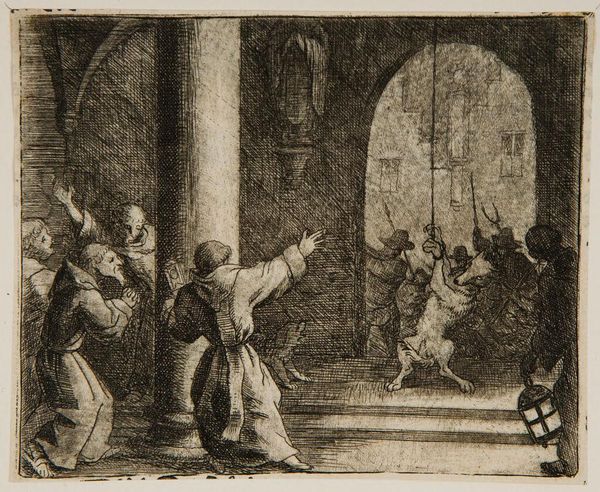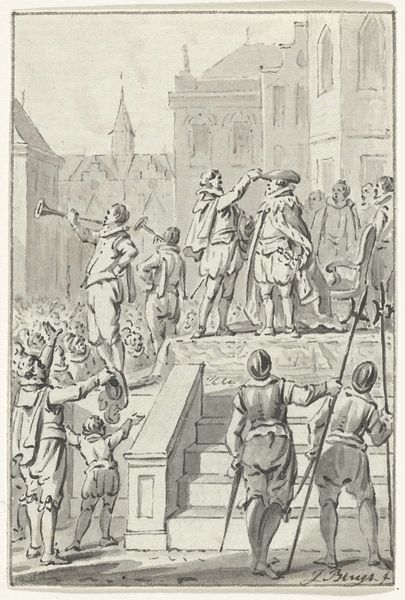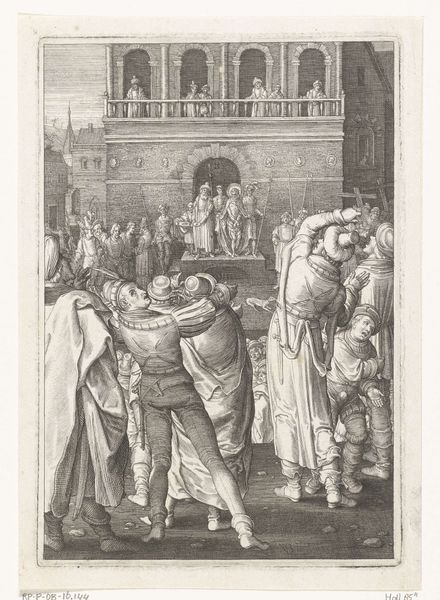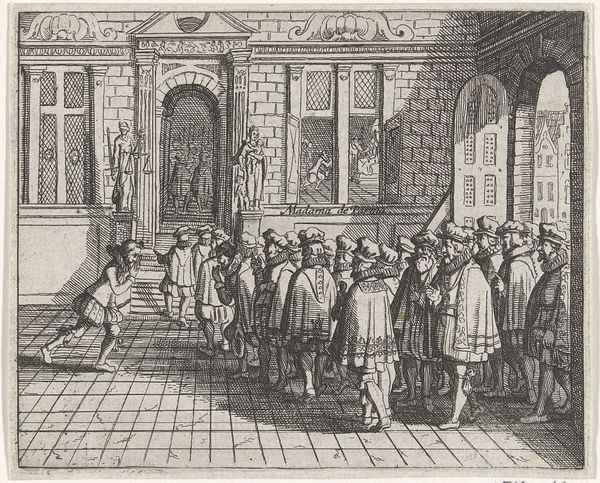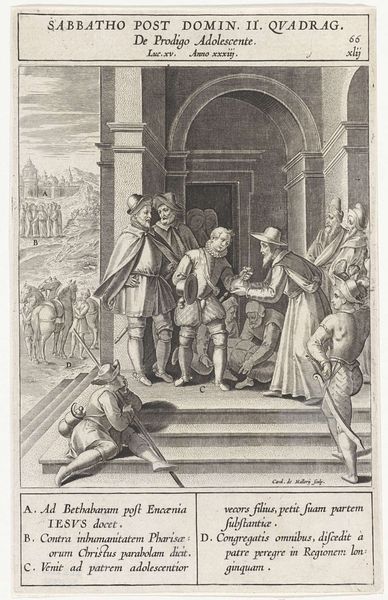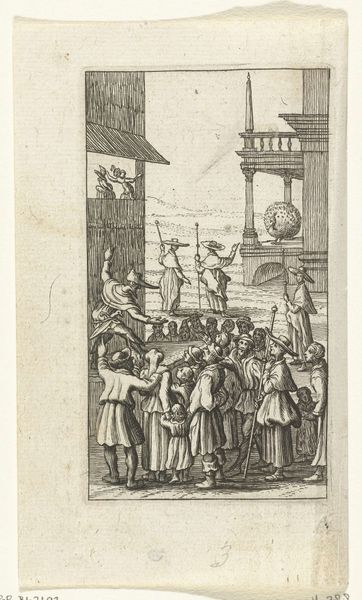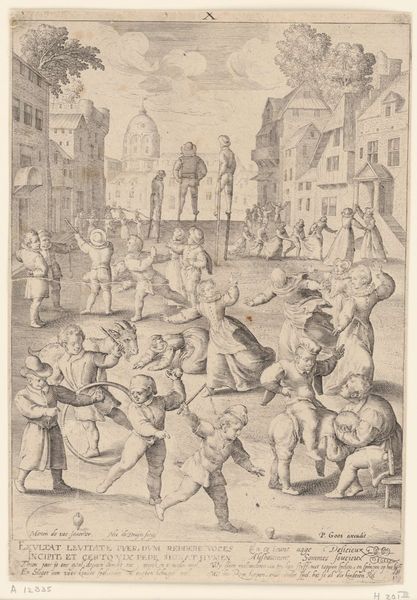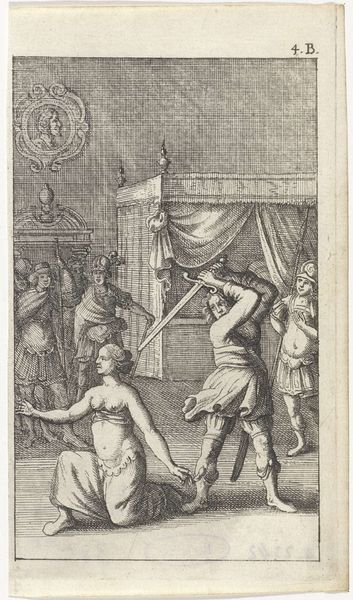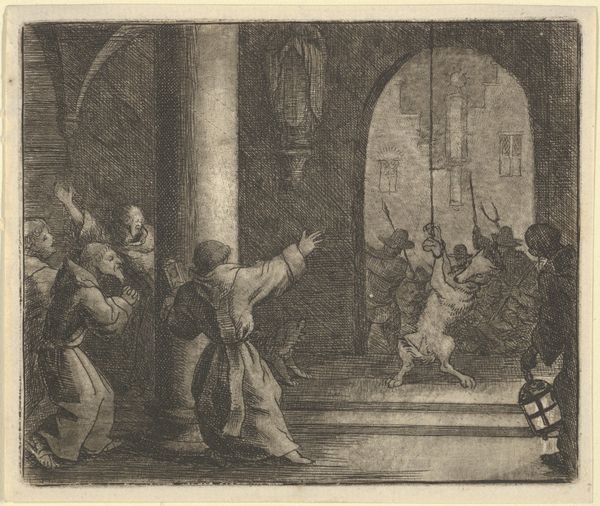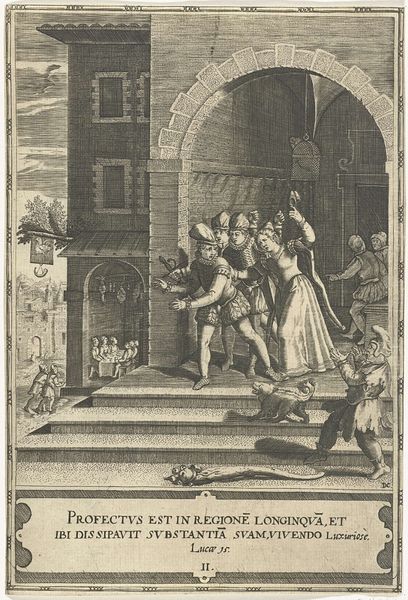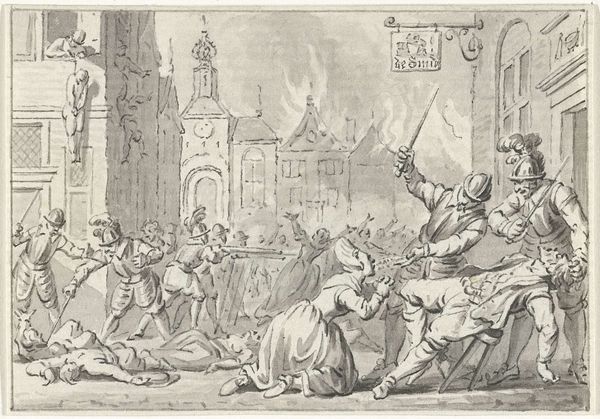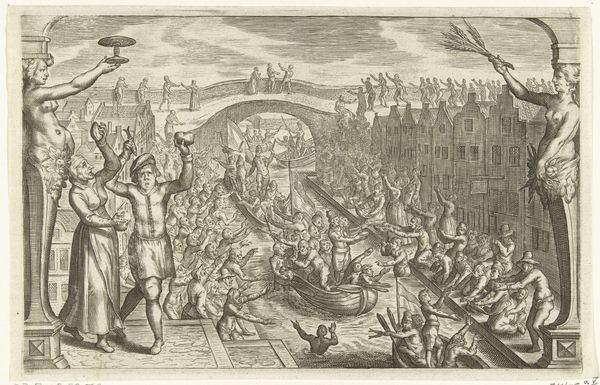
print, engraving
#
narrative-art
#
baroque
# print
#
old engraving style
#
figuration
#
form
#
line
#
cityscape
#
history-painting
#
engraving
Dimensions: height 180 mm, width 129 mm
Copyright: Rijks Museum: Open Domain
Curator: This engraving by Magdalena Roghman, dating to around 1650, is titled "Frontispice voor een treurspel." It feels overwhelmingly bleak at first glance. Editor: It does. I’m immediately drawn to the stark contrasts of light and shadow, the chaotic scene unfolding against the backdrop of what appears to be a besieged city. What narrative is being presented here and what do you feel about its materiality? Curator: This work would have served as a book frontispiece, specifically designed for a tragedy. These prints served as powerful visual summaries, immediately communicating the play's themes. Roghman's choice of engraving – a printmaking technique allowing for detailed linework – contributes to its dramatic effect and the reproducibility of these scenes. We see in the background a narrative in place relating the power structures that shaped Roghman's society and Holland in the early modern era. Editor: It's interesting how Roghman used line work here; look at the way the architectural space is defined by those really controlled etching marks on the copperplate. We also see that controlled nature used for clothing and bodies and you begin to sense an interesting interplay. What do you see at play with this design choice in front of what would most likely be a narrative? Curator: The figures depicted – the central figure being restrained, possibly even martyred, against the backdrop of what looks like an eastern inspired castle– tells a dramatic and tragic tale, probably focusing on power, injustice, and sacrifice, echoing common themes found in 17th-century tragedies. The visual language is clear and potent, likely aimed at sparking political dialogue with strong cultural connotations during that era. It uses old European artistic style yet includes text, narrative and eastern architectural design; fascinating choices all working to further connect and separate us as an audience. Editor: Seeing it from that point of view allows you to view this through an interesting lens and further appreciate the materiality of tragedy with commentary here. Curator: Agreed, it’s fascinating how a print, meant for mass consumption, can condense complex political narratives and continue sparking conversations across centuries.
Comments
No comments
Be the first to comment and join the conversation on the ultimate creative platform.
